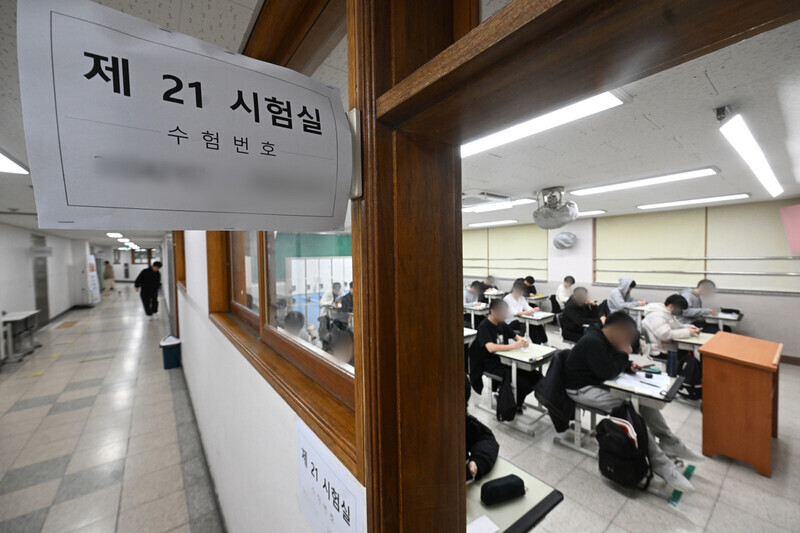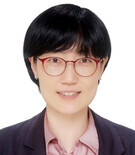hankyoreh
Links to other country sites 다른 나라 사이트 링크
[Column] Korea’s sick obsession with medical school


Another College Scholastic Ability Test (CSAT) has come and gone. This year’s Suneung, as the college entrance exam is locally known, was characterized by a large number of graduates — that is, those retaking the exam.
Of the 504,000 test-takers, only 326,000 (about 65 percent) were currently enrolled in high school. The proportion of those retaking the exam was the highest in 28 years, since 1996, when the introduction of the CSAT caused a flurry of confusion.
The hierarchization of universities into various tiers, as well as President Yoon Suk-yeol’s sudden decision to eliminate “killer questions” in June, has brought out a large number of graduates who have generally given strong showings on the CSAT.
More worrying, however, is the impact of what could be called the medical school bias. Earlier this year, a college student I met during the course of my research enrolled at a private university as a humanities major and, after studying six months more for the CSAT, switched to a college for Korean medicine.
Once he’d raised his CSAT score, he switched his prospects to the medical field. He was originally interested in majoring in philosophy. When I asked if he thought that Korean medicine was the right road for him, he replied that he’d “get used to it as he went along.”
It took another college student I met four years and numerous retakes to get his medical school acceptance letter. He thought he was done when he was accepted into a school for Korean medicine after his third stab at the CSAT, but when he saw that his friends in medical school considered Korean medicine college to be a lower tier, he took the test once more.
Even within the medical field, there’s a rigid hierarchy.
There are some commonalities in the tendency toward medical school. Not all, but many of them don't ask for aptitude. Even if you’re interested in other majors, if you’ve got the grades, you’ll be thrust into medical school.
If your grades are high enough, you’ll be pushed into pre-med prep classes even if that’s not where you intend to go. The age at which students start preparing for medical school is steadily going down, while the age at which people keep challenging themselves with the medical school entrance exam is only going up.
It is now common to see recruitment banners for academies looking to fill “pre-med primary school” classes. Some young people subject themselves to the college entrance exam five or six times to be able to apply for medical school. At the same time, science and engineering departments are struggling with student dropouts.
In the last three years, 911 (81.3 percent) of the 1,121 students admitted to national universities’ medical schools were those who had retaken the CSAT. The increased competition has made it difficult for current students to be granted regular admission, which is based on one’s CSAT score.
The rush to medical school is driven by the belief that a few extra years of schooling will be rewarded with a medical license that guarantees a high income for life. According to an Organisation for Economic Co-operation and Development report, the average income of a doctor in South Korea was 6.8 times higher than the average worker in 2021, and this gap is the widest among member countries.
In South Korean society, where job security has plummeted since the foreign exchange crisis, doctors have risen to the top of the list of “stable professions” and have become a black hole that sucks in talent over time. The trickle-down effect of medical licensure has become even more pronounced as medical school enrollment has been capped for 18 years due to protests by medical groups. The income gap between doctors and lawyers has gradually widened since the bar exam was abolished and the number of lawyers increased.
In 2020, when the Moon Jae-in administration promoted the expansion of medical schools and the establishment of public medical schools, the Research Institute for Healthcare Policy under the Korean Medical Association released a controversial public service announcement that asked, “Which doctor would you choose if you had to receive an important diagnosis that could decide whether you lived or died?”
The choice was between “a doctor who studied hard in school so as to make the top of the class every year” and “a public medical school doctor who was admitted on a recommendation system because he wanted to become a doctor, even though his grades were far from good enough.” This was an evident showcase of the sense of privilege enjoyed by doctors.
Patients and the public are the ones who bear the brunt of the obsession with medical schools. The number of doctors per 1,000 inhabitants is below the average for OECD member states.
Gaps in essential and community health care, highlighted by how patients in need of urgent care are often ushered from one emergency room to another, are alarming. They are the result of doctors flocking to more lucrative fields such as dermatology, ophthalmology, and plastic surgery, while the fields crucial to essential health, such as internal medicine, surgery, obstetrics, gynecology, and pediatrics are neglected.
But this is not to say that the blame should be placed solely on greedy doctors. It is because the state did not allocate doctors with public health care in mind in the first place, but left it to the market, which revolves around the pursuit of profit.
The preference toward medical school is a microcosm of the problems facing South Korean society, showcasing the polarized labor market and elitism, to the loss of rural areas due to concentration in the metropolitan areas, to the incompetence of the government and political parties.
We need to solve higher-order equations, but before that, it’s important to take a proper first step. Now that the president himself has formalized a plan for expanding the quota for medical schools, this should not remain a mere election gimmick.
It seems unlikely that one-on-one negotiations with doctors’ organizations will solve the problem. The government needs to present a long-term plan to restore public access to health care, and then put it up for public debate.
Please direct questions or comments to [english@hani.co.kr]

Editorial・opinion
![[Column] Welcome to the president’s pity party [Column] Welcome to the president’s pity party](https://flexible.img.hani.co.kr/flexible/normal/500/300/imgdb/original/2024/0515/3917157400447943.jpg) [Column] Welcome to the president’s pity party
[Column] Welcome to the president’s pity party![[Editorial] Korea must respond firmly to Japan’s attempt to usurp Line [Editorial] Korea must respond firmly to Japan’s attempt to usurp Line](https://flexible.img.hani.co.kr/flexible/normal/500/300/imgdb/original/2024/0514/2317156736305813.jpg) [Editorial] Korea must respond firmly to Japan’s attempt to usurp Line
[Editorial] Korea must respond firmly to Japan’s attempt to usurp Line- [Editorial] Transfers of prosecutors investigating Korea’s first lady send chilling message
- [Column] Will Seoul’s ties with Moscow really recover on their own?
- [Column] Samsung’s ‘lost decade’ and Lee Jae-yong’s mismatched chopsticks
- [Correspondent’s column] The real reason the US is worried about Chinese ‘overcapacity’
- [Editorial] Yoon’s gesture at communication only highlights his reluctance to change
- [Editorial] Perilous stakes of Trump’s rhetoric around US troop pullout from Korea
- [Guest essay] Preventing Korean Peninsula from becoming front line of new cold war
- [Column] The state is back — but is it in business?
Most viewed articles
- 1[Column] Welcome to the president’s pity party
- 2Could Korea’s Naver lose control of Line to Japan?
- 3Korean opposition decries Line affair as price of Yoon’s ‘degrading’ diplomacy toward Japan
- 4[Editorial] Korea must respond firmly to Japan’s attempt to usurp Line
- 5[Correspondent’s column] The real reason the US is worried about Chinese ‘overcapacity’
- 6[Column] Will Seoul’s ties with Moscow really recover on their own?
- 7US has always pulled troops from Korea unilaterally — is Yoon prepared for it to happen again?
- 8Naver’s union calls for action from government over possible Japanese buyout of Line
- 9[Editorial] Transfers of prosecutors investigating Korea’s first lady send chilling message
- 10Major personnel shuffle reassigns prosecutors leading investigations into Korea’s first lady